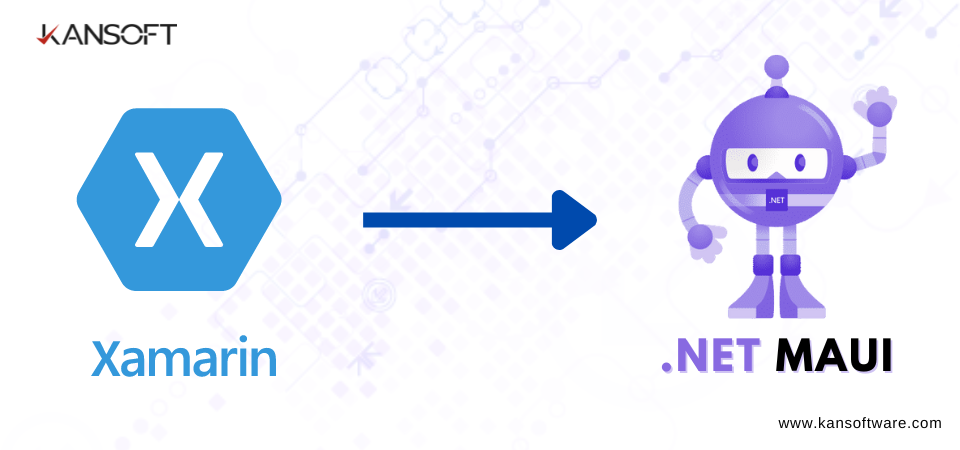As technology evolves, so does the world of mobile app development. Xamarin has been a popular choice for building cross-platform applications for years, but now it’s time to embrace the next generation in this space: .NET Multi-platform App UI (MAUI). MAUI builds upon the foundation of Xamarin and takes cross-platform development to the next level, promising improved performance, enhanced user experiences, and simplified code sharing.
Let’s explore the seamless migration from Xamarin to MAUI and discover the wealth of benefits it brings to our app development experience.
The time has come to embrace the future with .NET MAUI, the successor to Xamarin that extends beyond mobile platforms and ventures into desktop and web app development. This evolution unlocks a world of new possibilities for developers, promising to reshape the way we create cross-platform applications.
- Single Project Multi-Targeting: Bid farewell to managing multiple projects for different platforms. With .NET MAUI, we can consolidate our codebase into a single project targeting multiple platforms, streamlining our development process and reducing maintenance overhead.
- Enhanced UI Composition: Craft visually stunning and highly interactive user interfaces with ease. .NET MAUI introduces a flexible and extensible UI composition model, enabling us to build custom controls and layouts more efficiently, enhancing user engagement.
- Hot Reload: Say goodbye to time-consuming rebuilds and welcome real-time feedback with Hot Reload. This incredible feature allows us to see instant changes in our app’s UI and code modifications as we work, leading to faster iterations and more productive development cycles.
- Native Performance: Deliver exceptional user experiences with the power of native performance. .NET MAUI leverages platform-specific features, ensuring our apps perform optimally on each platform, mirroring the feel of truly native applications.
While transitioning from Xamarin to .NET MAUI is exciting, proper preparation is essential for a seamless migration. Let’s outline the critical steps to ensure our success:
- Assess Your Xamarin Codebase: Begin by evaluating your existing Xamarin codebase, identifying shared code and platform-specific implementations. Understanding the extent of code sharing will guide your focus during the migration process.
- Update Dependencies: Safeguard compatibility with .NET MAUI by updating third-party libraries and NuGet packages used in your Xamarin project.
- Refactor Code as Needed: Embrace the opportunity for code refinement, aligning your code with MAUI’s best practices to ensure optimal performance and maintainability.
As we venture into the exciting world of .NET MAUI, we join a thriving community of developers eager to explore its possibilities. Engage with the community, share your experiences, and tap into the wealth of knowledge available to accelerate your learning curve. Leverage the extensive MAUI ecosystem and the legacy of plugins and tools carried over from Xamarin to enhance your app development process and achieve new levels of innovation.
Migration from Xamarin to .NET MAUI marks an exciting step forward in mobile app development. The new possibilities brought about by the extension to desktop and web platforms empower developers to build even more versatile and feature-rich applications. By taking the time to understand the migration process and leveraging the extensive MAUI ecosystem, developers can unlock the full potential of .NET MAUI and create exceptional cross-platform apps for the modern world.
Seamlessly transition your Xamarin apps to .NET MAUI and harness the full potential of cross-platform development. Let our expert team guide you through the migration process and deliver remarkable results. Contact us at info@kansoftware.com


